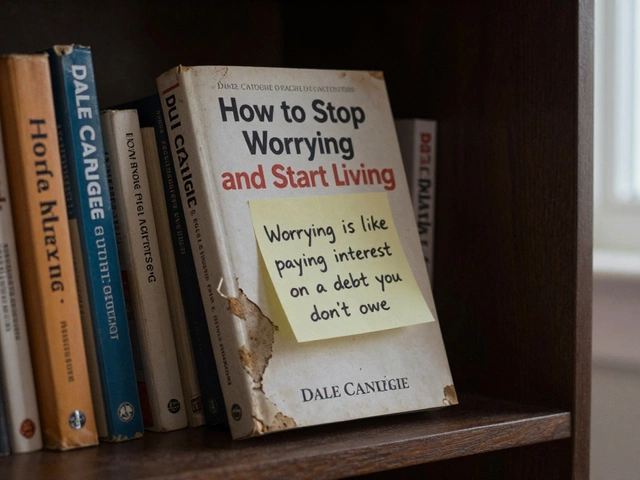Mental Reset Timer & Checklist
Your Reset Steps
Checklist
Great job!
You've completed your mental reset. Take a deep breath and carry this calm into the rest of your day.
Ever feel like your brain is stuck on repeat, replaying the same worries and to‑do lists?
When that happens, a mental reset is a short, intentional pause that clears mental clutter and restores focus. Think of it as hitting the refresh button on your mind, giving you space to breathe, regroup, and move forward with more clarity.
What a Mental Reset Actually Looks Like
A mental reset isn’t a week‑long vacation or a full‑blown therapy session. It’s a series of bite‑size actions you can do in 10‑30 minutes that target the biggest contributors to mental fatigue:
- Physical tension
- Racing thoughts
- Digital overload
- Emotional hijacking
By addressing each of these, you create a clean slate for the rest of the day.
Signs You Need a Reset Right Now
If you’re wondering whether a reset is worth the effort, look for these red flags:
- Difficulty concentrating for more than a few minutes.
- Heightened irritability over minor irritants.
- Physical symptoms like neck tension, headaches, or stomachaches.
- Constantly checking your phone or email without purpose.
- Feeling "stuck" in a negative thought loop.
Notice any of these? You’re probably running on mental fumes.
Core Pillars of an Effective Reset
Research from the American Psychological Association shows that a mix of movement, breath, and mindfulness produces the biggest drop in cortisol, the stress hormone.
Here are the pillars you’ll tap into:
- Sleep hygiene - a quick power‑nap or a moment of darkness to signal the brain it’s safe to relax.
- Physical activity - even a 2‑minute stretch releases endorphins.
- Breathing techniques - controlled breath lowers heart rate within seconds.
- Mindfulness - focusing on the present curbs rumination.
- Journaling - writing down worries outsources mental load.

Step‑by‑Step Mental Reset Routine (15‑Minute Version)
- Close your digital doors. Turn off notifications, put your phone on airplane mode, and shut the laptop screen. A 2‑minute digital detox signals the brain that it’s time to unwind.
- Ground yourself with breath. Sit tall, inhale through the nose for a count of four, hold for two, exhale through the mouth for six. Repeat three cycles. This simple box‑breathing drops heart rate by up to 15% per Harvard Health Review.
- Move the body. Stand, roll your shoulders, do a gentle spinal twist, and then finish with a 30‑second wall‑sit. Physical motion pumps fresh blood to the prefrontal cortex, sharpening focus.
- Light mindfulness. Close your eyes and notice the sounds around you without labeling them. Do this for 2 minutes; it trains the brain’s “default mode network” to stay in the present.
- Write it out. Grab a notebook, jot down three lingering thoughts and one positive intention for the rest of the day. This externalizes mental clutter.
- Finish with a mini‑visualization. Picture yourself completing a key task today with confidence. Visual rehearsal primes neural pathways for success.
That’s it - a complete reset in under 15 minutes. If you have more time, extend each step by a few minutes; the core structure stays the same.
Comparison of Popular Reset Techniques
| Technique | Typical Time Needed | Primary Benefit | Best For |
|---|---|---|---|
| Box Breathing | 2-3 minutes | Instant calm, lower heart rate | High‑pressure moments, meetings |
| Micro‑Stretch | 3-5 minutes | Release tension, boost circulation | Desk‑bound workers, long flights |
| Journaling Prompt | 5 minutes | Clear mental clutter, improve focus | Creative professionals, chronic worriers |
| Guided Mindfulness (1‑min audio) | 1 minute | Re‑anchor attention, reduce rumination | Anyone needing fast refocus |
Pro Tips & Common Pitfalls
Pro tip #1: Pair a reset with a physical cue - like a specific playlist or a scented candle - so your brain learns to associate the cue with calm.
Pro tip #2: Schedule mini‑resets every 90 minutes, matching the brain’s natural ultradian rhythm.
Pitfall to avoid: Skipping the digital detox. Even a quick glance at your phone reignites the stress loop.
Pitfall to avoid: Trying to “force” relaxation. If you feel resistance, simply name the feeling (“I’m tense”) and move on to the next step.

Quick‑Reference Reset Checklist
- Turn off notifications
- Box‑breathing: 4‑2‑6 (3 cycles)
- Stand, stretch, wall‑sit (30s)
- 2‑minute sound‑watching mindfulness
- Write 3 worries + 1 intention
- Visualize successful task completion
Print this list, stick it on your desk, and use it whenever you feel mentally jammed.
When to Dive Deeper
If a single reset isn’t enough and you keep hitting the same fatigue wall, consider these next‑level strategies:
- Weekly digital‑detox day - no screens after 7pm.
- Morning sunlight exposure - 10 minutes of natural light boosts serotonin.
- Regular aerobic exercise - 30 minutes three times a week cuts baseline cortisol by 20% (Study: JAMA Psychiatry, 2023).
- Professional coaching or CBT - re‑wires thought patterns that perpetuate stress.
The key is consistency. A mental reset is a tool, not a permanent fix.
Frequently Asked Questions
How often should I do a mental reset?
Aim for a 5‑minute reset every 90minutes during intensive work, and a longer 15‑minute session at least once a day. This aligns with the brain’s natural ultradian cycles.
Can a mental reset replace meditation?
It’s not a substitute for a regular meditation practice, but it offers a rapid “mini‑meditation” that can bridge gaps between longer sessions.
What if I don’t have a quiet space?
Use noise‑cancelling headphones or play soft ambient sounds. Even a visual cue like closing your eyes can create an internal quiet zone.
Is coffee compatible with a mental reset?
Yes, but limit intake before a reset. Caffeine spikes adrenaline, which can counteract the calm you’re trying to create. A cup after your reset can boost the refreshed feeling.
Do I need special equipment for the reset?
No fancy gear needed. Just a comfortable chair, a notebook, and optionally a timer or a short guided audio clip.










